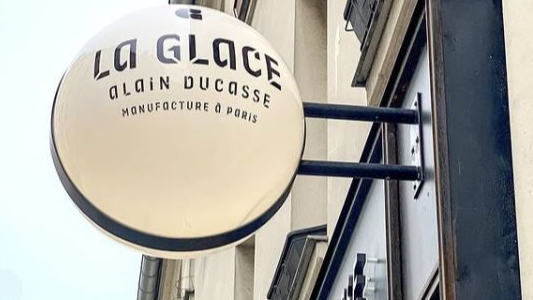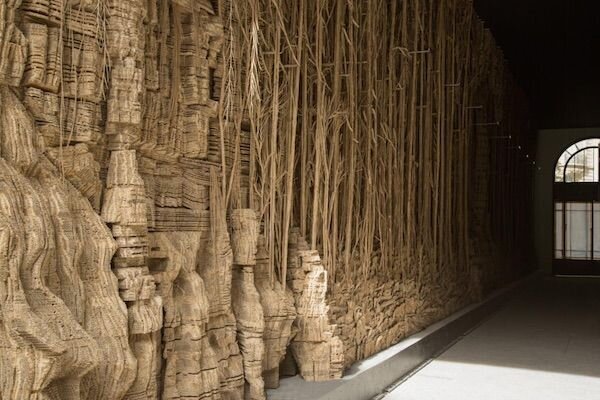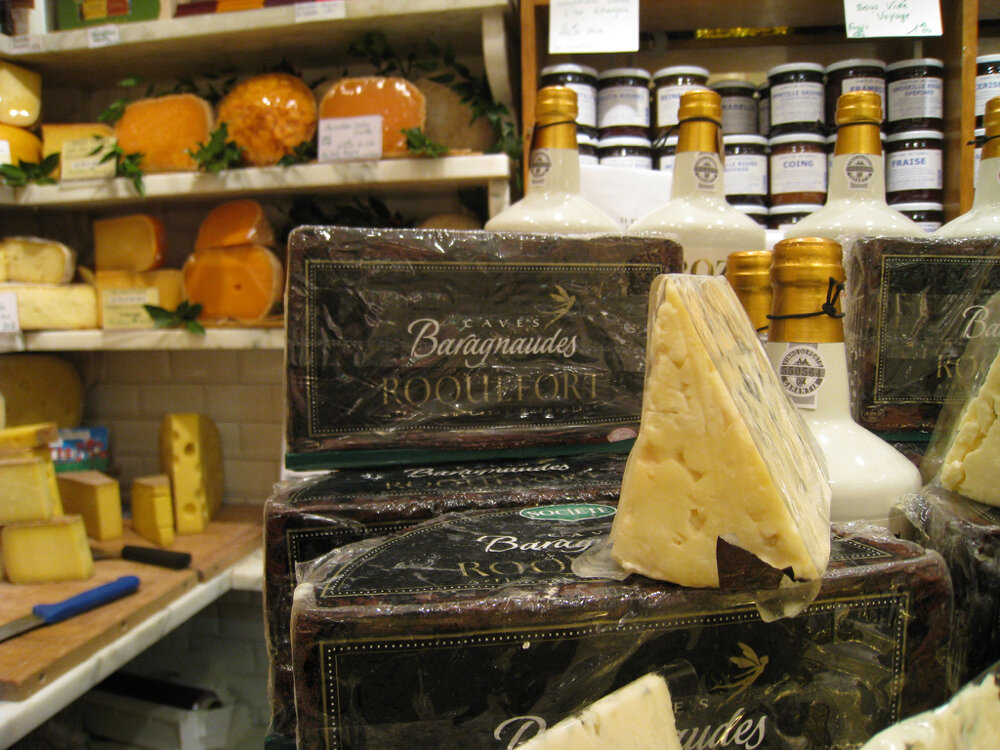So, what do you do besides go to museums?
If you have been reading my weekly articles for the past two years, you might think that all I do is visit museums. But that is not completely accurate. While my meanderings do revolve around museum exhibitions and gallery shows, they never end there. Ask my friend Bobby Stepp with whom I meandered almost weekly for the last months of his stay in Paris, which (lucky me) overlapped with the first months of my own. I would find a museum and then he/we would find a nearby restaurant for lunch. Finally, with my research skills honed from years of graduate school, I would find something for us to do or see or (mostly) taste, afterwards. Our pattern was easily and amicably established, back in those halcyon days when museum visits didn’t always mean pre-booking, proof of vaccination and masks.
I choose which museum to visit with care. I am just as careful about choosing the right spot for a simple lunch or an elegant afternoon tea (ask Franny), to say nothing of searching out the tangiest lemon tart and the smoothest single origin chocolate bar. So, this week instead of a sampling of exhibitions I have visited, I offer a sampling of culinary treats that I have enjoyed since May 19, 2021, when everything re-opened here in Paris, for a second time.
Figure 1. Jardins d’Olympe, Musée Carnavalet
Jardins d’Olympe at the Musée Carnavalet. (Figure 1) After immersing ourselves in 19th century Paris as captured by the photographs of Eugène Atget at the Fondation Cartier-Bresson, (which you can read more about here), my companion and I ate a late lunch at the Jardins d’Olympe at the Musée Carnavalet. I had walked by dozens of times since the museum’s reopening, always glancing in at what seemed a bustling and congenial spot. Finally, it was time to check it out. And really, how could I resist an outdoor dining space named in honor of Olympe de Gouges. (Figure 2) Who was? A late 18th century proto-feminist and political activist who wrote against slavery and in favor of women’s rights. Her best known work is the 1791 Declaration of the Rights of Woman and of the Female Citizen, written in response to the Declaration of the Rights of Man and of the Citizen. She was guillotined in 1793, at the age of 45, just two weeks after Marie Antoinette lost her head. The gang responsible for the Reign of Terror didn’t appreciate her attacks against their increasingly violent revolutionary government. A commemorative plaque marks the building where she lived in the 6th arrondissement. Place Olympe de Gouges was dedicated to her in 2004, in the 3rd. (Figure 3)
Figure 2. Olympe de Gouges & Déclaration des Droits de la Femme et de la Citoyenne, 1791
Figure 3. Plaque dedicated to Olympe de Gouges, 20 de la rue Servandoni, Paris
And now a pop up cafe named in her honor at the museum of the city of Paris. Run by an all female team of chefs headed by a celebrated contestant of Top Chefs. The cafe is casual. There is no table service. There are two lines instead. One line is for drinks, creative and refreshing, alcoholic and non. Another line is for food. The dishes are vegetarian (some vegan), seasonal, and like the drinks, creative. Right now, you’ll find the freshest of tomatoes, zucchinis and (surprisingly, for me) okra which I always associate with Charleston and New Orleans. (gomba is the French word for okra) with complex fresh herb dressings and tasty grains. The hearty and unusual combinations reminded me of my favorite place for inventive salads, the downstairs cafe at Merci, the concept store on Boulevard Beaumarchais, which alas did not survive the pandemic (the store did, the cafe didn’t). The same sort of thought and care is going into the dishes and salads and desserts prepared at the Jardins d’Olympe.
Creative too is the way you get your meal to take back to your table. No balancing sliding dishes on flimsy trays. No, your meal comes in stacked tiffins. (Figs 4 & 5) You know, those round metal multi-tiered tins that you see being handed to every passenger in every train in any Indian movie that includes trains. And somehow, they all seem to, don’t they? As with traditional tiffin carriers, the ones that hold the food that you have ordered, are opened by clicking a small catch on either side of the handle. And that way, the chef’s commitment to recyclable and reusable is perfectly met.
Figure 4. Food & Drink at Jardins d’Olympe, Musée Carnavalet
Figure 5. A Dabballa and his tiffins
Des Gars dans la Cuisine. (Figure 6) After seeing the half of the Rodin-Picasso exhibition that is at the Musée Picasso, (which you can read about here:) we thought about getting a pizza at Eataly, which are very good by the way. Instead, as we walked along rue Vieille du Temple, I said, let’s stop right here. At Des Gars dans la Cuisine. What a great name I would think each time I walked by. The restaurant’s expanded outdoor dining terrace now includes a triangle of space across the street, at the Musée des Archives Nationales. Unlike so many restaurants with lunch menus from Monday through Friday (except holidays), their entree/plat or plat/dessert for 18,50 is available on Saturdays, too. We each had a starter and a main. My starter was a delicate and delicious riff on gazpacho and borscht, by which I mean, gazpacho made with beets topped with a dollop of creme fraiche. My companion had herring with pickled onions, pickled carrots and warm slices of new potatoes bathed in a heavenly vinaigrette. How is it that I have never had that dish before? It was completely, overwhelmingly divine. Just the right combination of textures and flavors and temperatures. I have been getting it at every restaurant I have beeę to since. None alas has compared in flavor or délicatesse to what I managed to eat from my companion’s plate at Des Gars.
Figure 6. Photo in Des Gars dans la Cuisine Restaurant, rue Vielle du Temple
We ordered one glass of wine. The server asked if we were going to split it. We said yes. He brought two wine glasses, each filled with a very respectable pour. I reconfirmed it was one glass for two. It was. The plats were fine, but as we left, I decided that next time I would order two entrées. I find entrées more inventive. Or maybe it is just that my hunger is at its height for the entrée. This needs more research.
Figure 7. La Glace, Alain Ducasse, rue de la Roquette, Paris
Alain Ducasse Glacier & Manufacture. Instead of dessert at Les Gars, (although the dessert menu was tempting) I wanted to check out Alain Ducasse’s latest venture, an ice cream shop. (Figure 7) Which is next door to his chocolate shop on rue de la Roquette. At the chocolate shop, you see and smell cacao beans being roasted. At the ice cream shop, ice cream is churned to order. The flavors are both traditional and exotic. I selected olive oil ice cream and fresh herb sorbet. (Figure 8) Smooth (the first) and refreshing (the second). This flavor profile works for my salads and now my desserts, too. Since it isn’t really a shop, more like a stand, there was no place to linger and savor our melting desserts. I am not a fan of eating while walking, which I suppose is why I’m not such a committed citizen of the United States of America. But just as I was about to do the unthinkable, we happened upon another Ducasse venture, the Manufacture, (Figure 9) a cafe on nearby Rue St. Sabin. The smell of roasting coffee beans beckoned, so we sat down, ordered a cafe and began to eat our ice cream as it should be eaten, leisurely, one delicate spoonful at a time. Everything about this café is genial, from the lovely wait staff to the accouterments for the coffee to the unexpected cadeau, a puffy and delicious financier for each of us.(Figure 10) And the coffee is excellent, of course.
Figure 8. This is not exactly my glace of olive oil ice cream & herb sorbet, but close, at least the colors.
Figure 9. Manufacture, Alain Ducasse café and shop to buy coffee
Figure 10. Café and financier at Manufacture, rue St. Sabin
Beaupassage. This past Saturday, we went to the Fondation Cartier on Boulevard Raspail to see a fabulous Damien Hirst exhibition (more about that soon). Afterwards we wandered over to one of my favorite spots, Beaupassage, at the other end of Boulevard Raspail. (Figure 11) Maybe you know it. It occupies the triangle of space where Blvd Raspail meets rue de Bac and rue Grenelle, around the corner from the recently reopened Hotel Lutetia, a few blocks from Bon Marché and across the street from the Musée Maillol. Especially if you are going to an exhibition at the Maillol, which you should, you have no reason not to go. The perfect address. Obviously.
Figure 11. Beaupassage, Boulevard Raspail
I love Parisian passages, I think everyone does. And me being me, I have done some research to learn more about them. Back in the day, before Haussmann and department stores, there were 240 covered or open-air galleries lined with businesses of which only about 20 survive today. A book written by the German philosopher, Walter Benjamin, called the Arcades Project is a study of the role the passages couverts, (the iron and glass covered arcades), played in 19th century Paris. (Fig. 12). Especially in the lives of flaneurs and chiffonniers (my two favorites, too). Benjamin had not yet finished his manuscript when the Nazis invaded Paris. He entrusting his manuscript and notes to a librarian at the Bibliothèque Nationale, planning to return to France and his project when he could. But he did not to survive the war. He had gotten as far as Spain on his way to Portugal en route to the United States when Franco cancelled all transit visas. Fearing that he would be sent back to Nazi France and then transported to the camps, he committed suicide (September, 1940).
Figure 12. Arcades Project, Walter Benjamin
His Arcades Project was discovered after the war and finally published by Harvard in 1999. The art historian Judith Wechsler made a film of it in 2014, called “The Passages of Walter Benjamin,”. I saw a screening of it at the Mechanics Library (S.F.’s version of the American Library). See it if it ever comes your way. And when you are next in Paris, you can pay your respects to Benjamin in both the Marais and the 15th. There is a Passage Walter Benjamin just off rue de Rivoli and a plaque on 10 rue Dombasle that commemorates his last address in Paris, the last address in his life. (Figure 13)
Figure 13. Passage Walter Benjamin, off rue de Rivoli, Paris.
I discovered Beaupassage the week it opened in August, 2018. I was walking by and noticed a covered passageway with a block long glass enclosed forest on either side. (Figure 14, 15) I walked in further to examine them more closely. The forests were made of corrugated cardboard and wood. I later learned that this artist (Eva Jospin) and three others, had been commissioned to embellish the exterior spaces of Beaupassage. All four sculptures are original and provocative (Figure 16)
Figure 14. Beaupassage entry from Blvd Raspail. Sculpture by Eva Jospin
Figure 15. Detail, sculpture by Eva Jospin, Beaupassage
Figure 16. Beaupassage sculpture by Fabrice Hyber
This contemporary passage was a huge piece of real estate that had been occupied by a 17th century convent and a Renault garage. The developers could have leveled the site and started fresh, which would have been much easier, of course. Instead they saved as much as they could to create a mixed use facility with commercial spaces at street level and apartments above. Delivery trucks use the underground level, to keep Beaupassage pedestrian. Have you ever been to Disney World in Orlando, Florida? All deliveries happen underground there, as well. Which adds immeasurably to its appeal. Venice is nice that way, too.
Figure 17. Beaupassage, Boulangerie Thierry Marx
Here is what I did when I was there on Saturday. I bought some bread at Thierry Marx, which I cannot recommend highly enough. (Figure 17) Any of the breads you choose is the right choice, they are all delicious and organic and sourced locally. If you are in the area around lunchtime and you are looking for a very casual lunch, you can do no better than to buy a jambon buerre baguette here. It is the all-time best. I also had a cup of coffee, at the café next to Thierry Marx. Actually, the café is just a cart that makes the best coffee. Ever. Coffee that is so creamy and so smooth that it is more like a rich, decadent dessert than anything else. (Figure 18)
Figure 18. Beaupassage, % Arabica Café
%Arabica Café (yes, that the name of the cafe) is owned by a world champion of latte art, Junichi Yamaguchi. Latte art is the pattern or design on the surface of your latte. The level of sophistication of the design is a function of the barista’s experience and the quality of the espresso machine. (Figure 19) Each cup of coffee at %Arabica is brewed to order. Perfection takes time. Be patient. Your patience will be rewarded by a perfectly brewed and beautifully presented café.
Figure 19. A simple latte art design from % Arabica Café, Beaupassage
They have been building an indoor space for the past three years. It is still not finished. Maybe never will be. If you want to try their coffee, and who, except for someone who doesn’t drink coffee, wouldn’t, but you don’t like sitting outdoors, although in the age of Covid-19, you really should get used to it, they do have a minuscule indoor space at Passage des Panoramas, near the Musée Grévin.
Here are a few other stores that I can recommend at Beaupassage. If you are a meat eater, Polmard, the butcher to the stars, is here. When my son Nicolas was here, we would share the best plate of charcuterie at Polmard. With a glass of wine, a decent baguette and a sunny day. Perfection. Pierre Herme’s first venture into sit down dining is at Beaupassage, Café Pierre Hermé was such a success that there are now PH cafes all over Paris. If you are here at Christmas time and you are feeling festive but don’t want to buy an entire bûche de Noël, you can enjoy a slice here. It’s what I do. Of course, there is a fromagerie, La Fromagerie Barthélémy (figure 20) which one reviewer calls the most beautiful and expensive fromagerie in Paris. She warns that ‘the women who run this iconic shop are famously intimidating’. Apparently, this is the place to go if you know your cheese and you are on an expense account.
Figure 20. Fromagerie Barthélémy, Beaupassage, Blvd Raspail
When I wandered into Beaupassage that first time, I didn’t want to leave. And I go back as often as I can. If you don’t know it, go. If you do know it, go back again, soon. Just like Paris itself, it is always worth the trip.
Copyright © 2021 Beverly Held, Ph.D. All rights reserved
Dear Reader, I hope you enjoyed reading this article. Please click here or sign up below to receive more articles plus other original content from me, Dr. B. Merci!
And, if you enjoyed reading this review, please consider writing a comment. Thank you




















